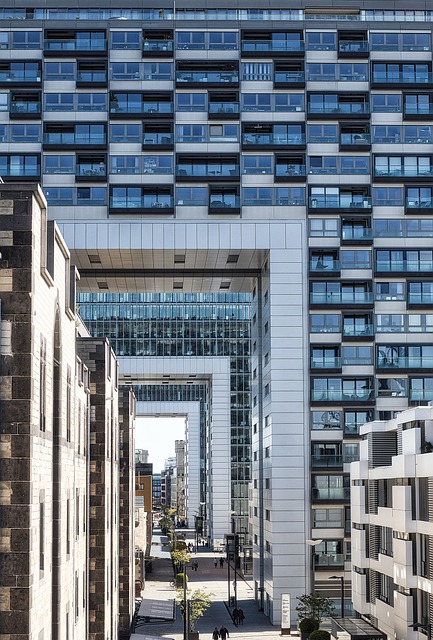House sitting is a comprehensive responsibility that goes beyond merely residing in a property temporarily. It involves meticulous caretaking and personal accountability, with seasoned house sitters acting as custodians of homes, maintaining their routines and preserving their integrity. This role requires a deep understanding of the property's unique characteristics and a commitment to manage it as if it were one's own. Trust is central to this relationship, as homeowners entrust sitters with the responsibility of safeguarding their interests and property. House sitting offers valuable lessons in trustworthiness, responsibility, and empathy, providing a hands-on education in diverse living space maintenance and management. It's a practice that benefits both parties, offering homeowners peace of mind while they are away, and sitters the opportunity to live rent-free. This symbiotic arrangement fosters a strong, trustworthy bond and allows for a personal touch in maintaining the property, which can prevent potential issues and ensure owners return to a familiar, well-cared-for environment. House sitting thus serves as an enriching experience that combines practical maintenance with emotional stewardship, offering unique insights into full-time property management.
Exploring the nuanced art of property management, this article takes a closer look at house sitting as a personalized approach that harmonizes the responsibilities of caretaking with the intimacy of home stewardship. Through a series of narratives and insights, we delve into the benefits and challenges of house sitting, offering a unique perspective on how it can serve as an effective form of property management that goes beyond the conventional. From cultivating trust with homeowners to actively engaging within local communities, this article will guide you through the personal journey of house sitting, highlighting its potential to transform not just properties, but also lives. Join us as we explore the human touch in property management and how house sitting can be a fulfilling venture for both home protectors and property owners alike.
- Embracing Responsibility: A Personal Journey into House Sitting as a Form of Property Management
- – Personal anecdotes on starting as a house sitter
- – The benefits of house sitting for both homeowners and sitters
Embracing Responsibility: A Personal Journey into House Sitting as a Form of Property Management

Embarking on a journey into house sitting is more than just a temporary living arrangement; it’s a nuanced form of property management that requires a deep sense of responsibility and attentiveness. As a seasoned house sitter, one gains firsthand experience in maintaining and safeguarding properties as if they were their own. This level of personal care extends beyond mere upkeep; it encompasses understanding the rhythm of the home, respecting the routines that are already established, and ensuring that every aspect of the property is left untouched, save for the natural wear and tear that comes with time. The trust placed in a house sitter by property owners is profound, fostering a unique relationship built on accountability and a genuine commitment to stewardship. This experience not only offers a glimpse into the life of a homeowner but also provides invaluable insights into the demands and intricacies of full-time property management. It’s an opportunity to cultivate a personal connection with properties, their surroundings, and often, the local community. House sitting as a form of property management is a testament to the adaptability and dedication required to care for someone else’s treasured space, ensuring that it remains a haven, even in one’s absence.
– Personal anecdotes on starting as a house sitter

Engaging in house sitting presented an array of unexpected lessons and opportunities for personal growth. My journey into property management with a personal touch began with a seemingly straightforward task: looking after a friend’s home while they were away. This simple act opened the door to a world where trust, responsibility, and empathy were not just concepts but tangible skills honed through daily application. Each house I sat, from a quaint cottage nestled in the countryside to a modern apartment overlooking a bustling cityscape, taught me the importance of maintaining a space as if it were my own. The homes I cared for were more than structures; they were temporary sanctuaries where I learned to respect and understand the unique rhythms of their inhabitants, from the quirks of an aging furnace to the exact day the roses would bloom. These experiences laid the foundation for my approach to property management: treating every home with the same level of care, attention, and personal touch that I had learned to provide through house sitting. The stories from these homes are a testament to the profound connection one can form with a space and its history, a connection that extends beyond mere physical upkeep and into the realm of emotional stewardship. House sitting wasn’t just about filling a role; it was about creating a personal bond with each property, ensuring that when the owners returned, they found their home not only intact but imbued with the comforting familiarity of continued care.
– The benefits of house sitting for both homeowners and sitters

House sitting presents a mutually beneficial arrangement for both property owners and sitters, offering a range of advantages that extend beyond the conventional scope of property management. For homeowners, entrusting their property to a dedicated house sitter can alleviate concerns about security and maintenance while they are away. Sitters gain the privilege of living rent-free in exchange for their caretaking services, which includes tasks such as watering plants, collecting mail, and ensuring that the home remains secure. This symbiotic relationship not only safeguards the property against potential risks associated with long-term vacancy but also allows both parties to form a trustworthy connection. House sitters often become the eyes and ears of the property, providing a personal touch by taking care of the home as if it were their own. This level of care can lead to additional benefits such as reduced insurance costs for homeowners and a sense of community for those who travel frequently. The personal oversight provided by house sitting can prevent issues like burst pipes or intrusions that might otherwise go unnoticed, preserving the integrity of the property and its belongings.
Moreover, the personal touch of house sitting transcends mere upkeep; it encompasses the stewardship of a home’s unique character and ambiance. Sitters who are attuned to the nuances of their temporary residences can ensure that the home remains a comfortable and inviting space, maintaining its ambiance and appeal. For property owners, this translates into returning to a well-maintained and familiar environment, which is particularly comforting for those with seasonal or frequent absences. The practice of house sitting fosters a deeper connection with properties beyond the scope of transactional property management, emphasizing care and responsibility that enhances the overall experience for both parties involved.
In conclusion, house sitting emerges as a nuanced form of property management that blends the responsibilities of maintaining a property with the personal touch of lived-in care. The practice not only offers peace of mind for homeowners through consistent upkeep and security but also presents unique opportunities for sitters to experience diverse living environments. As the insights shared in this article illustrate, house sitting is more than just a service; it’s a symbiotic relationship that can lead to profound personal growth and satisfaction. For those considering this alternative approach to property management, it’s clear that the hands-on, individualized approach of house sitting can be both rewarding and effective. Embracing the challenges and rewards of house sitting requires dedication, adaptability, and a genuine commitment to stewardship, ensuring that every home remains a cherished space, whether occupied or not.
